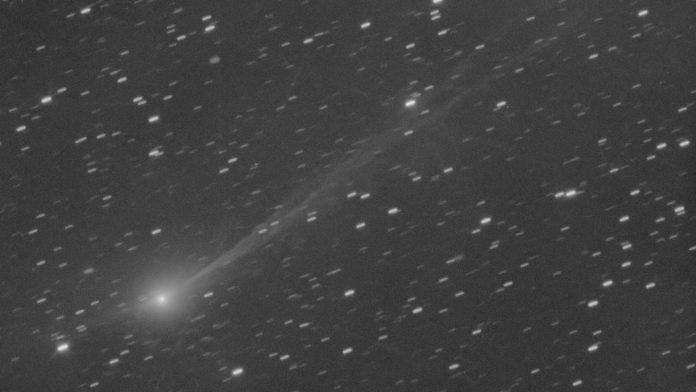Astronomer Gianluca Masi captured a spectacular image of interstellar comet 3I/ATLAS on Nov. 19, as it raced headlong away from the sun following a close pass of our parent star on Oct. 29, an event known as perihelion.
Masi captured 3I/ATLAS soon after it emerged from behind the glare of the sun in the weeks following perihelion, revealing a bright central nucleus surrounded by the diffuse glow of its gaseous coma. Stunning detail can also be observed in the comet’s ion tail, which takes on an almost spectral, gossamer-like appearance as it is caught up and swept away by the stream of charged particles emanating from the sun, known as the solar wind.
“For me, it is particularly interesting to see how such an interstellar object evolves,” Masi told Space.com in an email. “Knowing it came from so far away adds a very special flavor to the observations.”
Masi’s image is the result of combining 11 individual 120-second exposures taken with a 10-inch (250 mm) astrograph telescope equipped with a state-of-the-art astronomy camera located at the Virtual Telescope Project’s facility in Manciano, Italy. The observations were made during a free public livestream under good atmospheric conditions as the comet travelled through the stars of the constellation Virgo in the early hours of Nov. 19 (local time).
Editor’s Note: If you capture an image of 3II/ATLAS and want to share it with Space.com’s readers, then please send your photos and comments along with your name and location to spacephotos@space.com.








